The topography of the seabed, under thousands of feet of water, is known thanks to the low undulations of the ocean surface. Some satellite altimetry measurement as Cryosat or Jason allow to measure the height of the ocean surface.
Knowing precisely the average height of the ocean surface, we deduce the relief of the seabed. How?
To obtain a signal corresponding to the underwater relief, a complex digital processing should be done to remove all effects related to satellite track variations and disturbances such as ocean tides, currents, winds, atmospheric pressure or the expansion of the water due to the temperature. These variations in sea level are of the order of a few centimeters to several meters.
« It takes years of measurement, with several successive passes the same place to remove the effects of currents, tides and other disturbances, to keep in the end that the mean sea level », said David Sandwell, researcher at Scripps Institution of Oceanography UC San Diego, California.
Once the average height of the surface of the sea precisely known, the measures indicate that this height is not the same across the surface of the oceans, it varies depending on the seafloor and this corresponds surprisingly, to variations in topology of seabed.
| | In other words, on the surface there are small undulations in relation to the average height of the sea and this corresponds to a mini relief (a flattened relief) of the seabed. Satellite measurement, uses this property of the surface to reflect the topography of the seabed, the funds have an influence on the level of the water surface that covers them.
« We measure actually fine variations of the earth's gravity. When there is an underwater mountain, it has a greater density than the surrounding water and attracts more water than the surrounding environment. Since water is incompressible, there is more that accumulates above the seamount, which causes a slight increase in the local level of the ocean. », explains Stéphane Calming, Research Director at IRD (Institute of Research for Development) in Toulouse, France.
NB: the ocean observing satellites are exceptional sources of continuous global observations, very precise of the physical and biological ocean state (status and sea level, ocean currents, salinity, surface temperature of the sea, ocean color and sea ice) and atmospheric parameters (winds at the ocean surface, air-sea fluxes, precipitation) that determine oceanic circulation. In 2014, the sea level rises by an average of 3.27 mm per year, while it was only 1.7 mm in 1993-1994. | | 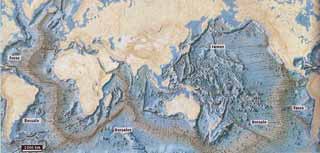 Image: Geographic map of the ocean floor and plate boundaries. The relief of the seafloor creates ripples on the surface of the sea, which correspond to a mini topology of of background. An ocean ridge corresponds to a water bump on the surface of several meters in height, and an oceanic trench corresponds to a hollow of water to the surface. Thus the satellites of altimetry measurement of high-precision (of the order of cm) allow to map the submarine relief. The method of mapping of the seafloor via satellite making a significant improvement, because ≈80% of the ocean surface was not covered by onboard bathymetric sounders on ships. Bathymetry is the underwater equivalent of altimetry, referred to measurement ocean depth. |



 Automatic translation
Automatic translation
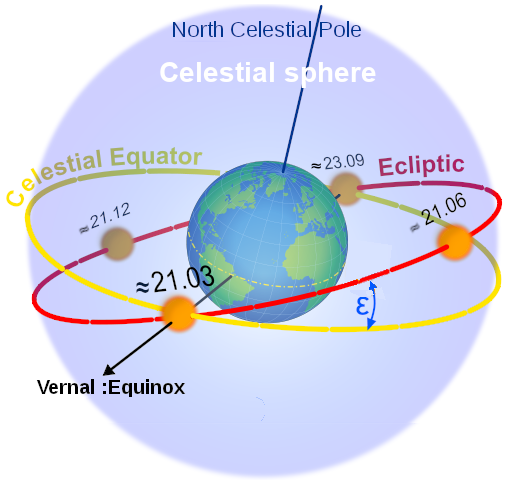 When does spring start?
When does spring start?
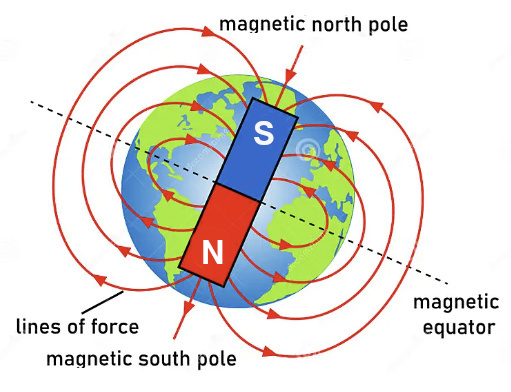 Reversal of the Earth's magnetic field over time
Reversal of the Earth's magnetic field over time
 Simulator, the revolution of the planets
Simulator, the revolution of the planets
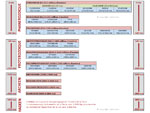 Earth's geological time
Earth's geological time
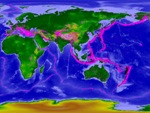 Ocean water from elsewhere
Ocean water from elsewhere
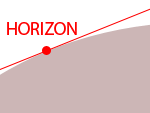 How to calculate the distance from the horizon?
How to calculate the distance from the horizon?
 Declination and right ascension in the celestial sphere
Declination and right ascension in the celestial sphere
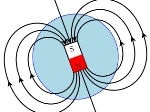 Earth's magnetic field reverses every 100,000 years
Earth's magnetic field reverses every 100,000 years
 South Atlantic Anomaly (SAA)
South Atlantic Anomaly (SAA)
 Classification of tornadoes
Classification of tornadoes
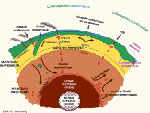 Life-giving radioactivity
Life-giving radioactivity
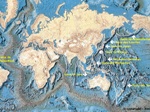 The great ocean trenches
The great ocean trenches
 Measure the passage of time
Measure the passage of time
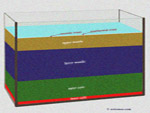 And if we put the Earth in an aquarium
And if we put the Earth in an aquarium
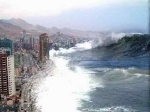 Earth in crisis, the end of a stable world
Earth in crisis, the end of a stable world
 Earth
Earth
 And she spins majestically
And she spins majestically
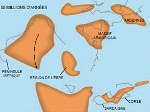 Water reservoirs on Earth
Water reservoirs on Earth
 How much is the sea level rising?
How much is the sea level rising?
 Planetary Darkening
Planetary Darkening
 The life of the Earth perceived by man
The life of the Earth perceived by man
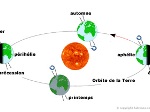 Effects of Earth's Eccentricity
Effects of Earth's Eccentricity
 The explanation of the Little Ice Age
The explanation of the Little Ice Age
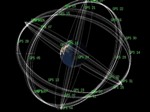 The orbital waltz of GPS satellites
The orbital waltz of GPS satellites
 Astronomy and Anxiety of the Past
Astronomy and Anxiety of the Past
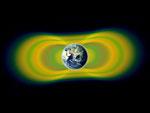 Van Allen Radiation Belt
Van Allen Radiation Belt
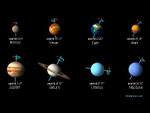 Axis of rotation of the planets or obliquity
Axis of rotation of the planets or obliquity
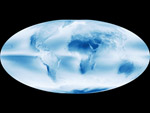 The disturbing cloud cover of the Earth
The disturbing cloud cover of the Earth
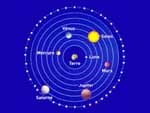 Anthropocentric and geocentric vision
Anthropocentric and geocentric vision
 The Galilean Cut
The Galilean Cut
 Foucault's pendulum swings relative to what
Foucault's pendulum swings relative to what
 Problem of longitude at sea
Problem of longitude at sea
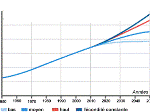 World population, still gallopingin 2008
World population, still gallopingin 2008
 Global warming
Global warming
 The oldest image of the Earth
The oldest image of the Earth
 Life evolves in the shelter of glaciations
Life evolves in the shelter of glaciations
 Impact theory at the origin of the Moon
Impact theory at the origin of the Moon
 What is an anti-twilight arch?
What is an anti-twilight arch?
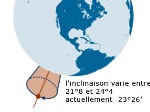 Obliquity at the origin of the seasons
Obliquity at the origin of the seasons
 Liquid water, chemical reaction accelerator
Liquid water, chemical reaction accelerator
 The aurora and its rays of light
The aurora and its rays of light
 The new definition of the astronomical unit
The new definition of the astronomical unit
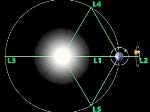 Lagrange points L1 L2 L3 L4 L5
Lagrange points L1 L2 L3 L4 L5
 Planet water, extraterrestrial element
Planet water, extraterrestrial element
 Chaos and sensitivity to initial conditions
Chaos and sensitivity to initial conditions
 Simulator, the round of near-Earth cruisers
Simulator, the round of near-Earth cruisers
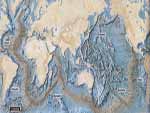 Satellites that measure underwater relief
Satellites that measure underwater relief
 Hadean's Hell
Hadean's Hell